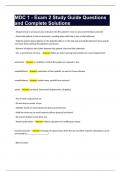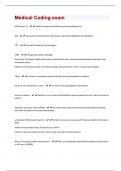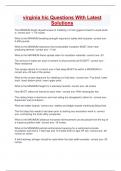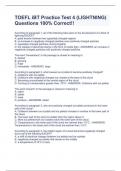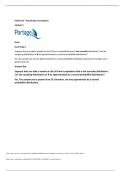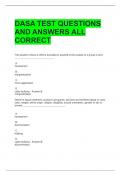1. INTRODUCTION AND OVERVIEW ............................................................................................................................. 3
CONCEPTUALIZING ........................................................................................................................................................ 3
VIOLENCE - Johan Galtung (1969) provides a compelling way to think about violence and peace. He identifies
two different types of violence, being: ..................................................................................................................... 3
PEACE - Johan Galtungs (1969) typology of peace ................................................................................................... 3
CONFLICT TRENDS ......................................................................................................................................................... 3
PARADIGMS ................................................................................................................................................................... 4
Paradigms and approaches to Violence and security ................................................................................................... 4
2. VIOLENCE AND STATE FORMATION.................................................................................................................... 5
KEY CONCEPTS .............................................................................................................................................................. 5
THE 'BELLICIST' APPROACH TO STATE FORMATION....................................................................................................... 6
STATE FORMATION ACCORDING TO TILLY: EUROPE .................................................................................................. 6
GOING AWAY FROM THE EUROPEAN CASE: SOUTHEAST ASIA ................................................................................. 6
ALTERNATIVE EXPLANATIONS: Why do some have high state capacity and some do not? .......................................... 7
'THE EMERGENCY' - Case of state strengthening - MALAYSIA AND SINGAPORE CASE ............................................. 7
CIVIL WAR - Case of state weakening - GUATEMALAN CASE..................................................................................... 8
3. NUCLEAR WEAPONS ..................................................................................................................................................... 9
EMPIRICAL OVERVIEW .................................................................................................................................................. 9
WEAPONS OF MASS DESTRUCTIONS (WMDs) - refers to nuclear, biological, chemical, and occasionally
radiological weapons. ............................................................................................................................................... 9
DETERRENCE: Realist Paradigm..................................................................................................................................... 9
ANTI-NUCLEAR TREATIES AND INSTITUTIONS: Liberal paradigm ................................................................................ 10
THE IMPORTANCE OF NORMS: Constructivist explanation......................................................................................... 10
WRAP UP ..................................................................................................................................................................... 10
4. DEMOCRACY AND WAR .................................................................................................................................. 11
KEY CONCEPTS ............................................................................................................................................................ 11
DEMOCRACY AND INTERSTATE WAR........................................................................................................................... 11
DEMOCRATIC PEACE THEORY AND ITS CRITICS....................................................................................................... 11
EFFECTS OF REGIME TYPE ON WAR OUTCOMES .................................................................................................... 12
DEMOCRACY AND INTRASTATE VIOLENCE .................................................................................................................. 12
WRAP UP ..................................................................................................................................................................... 13
5. GENDER AND CONFLICT .................................................................................................................................. 13
Gender inequalities and subordination may CAUSE violent conflict ...................................................................... 13
Gender inequalities and subordination may be a CONSEQUENCE of conflict ........................................................ 13
Gender can change the DYNAMICS of a conflict ..................................................................................................... 13
Gender can affect public and institutional REACTIONS to conflict ......................................................................... 13
VIOLENCE TARGETING GENDER AND SEXUAL MINORITIES..................................................................................... 15
1
, Women participation in rebel groups in war .......................................................................................................... 16
Women in war ......................................................................................................................................................... 17
HOW DOES LAW TAKE GENDER INTO ACCOUNT?................................................................................................... 18
International war laws prohibiting sexual violence................................................................................................. 19
6. ETHNIC CONFLICT ....................................................................................................................................................... 20
DEFINING ETHNICITY AND ETHNIC CONFLICT ............................................................................................................. 20
WHAT IS ETHNICITY? ............................................................................................................................................... 20
WHAT IS ETHNIC CONFLICT? ................................................................................................................................... 20
THEORETICAL APPROACHES TO ETHNIC CONFLICT..................................................................................................... 20
Horowitz (1985) and Group Competition ................................................................................................................... 22
CRITIQUE ..................................................................................................................................................................... 22
CASE STUDY: NORTHERN IRELAND.............................................................................................................................. 22
IRISH INDEPENDECE AND PARTITION .......................................................................................................................... 22
INCREASED SECRETARIAN POLARIZATION: a focus on Northern Ireland .................................................................... 22
GOOD FRIDAY AGREEMENT ........................................................................................................................................ 23
WRAP-UP ..................................................................................................................................................................... 23
8. GENOCIDE ................................................................................................................................................................... 23
CONCEPTS ................................................................................................................................................................... 23
WHAT MAKES GENOCIDE MORE LIKELY? .................................................................................................................... 24
Most of the literature today is a mix of A. and B. The strategic and the ideological lenses are not self-
exclusionary. Mostly a combination of the two ...................................................................................................... 25
WHY DO INDIVIDUALS PARTICIPATE IN GENOCIDE? ................................................................................................... 25
CASE STUDY: THE RWANDAN GENOCIDE .................................................................................................................... 26
WRAP-UP ..................................................................................................................................................................... 27
9. CIVILIAN RESCUE ............................................................................................................................................ 27
UNDERSTANDING RESCUING ...................................................................................................................................... 27
RESCUING AS A CONCEPT ....................................................................................................................................... 27
UNDERSTANDING SELF-PROTECTION .......................................................................................................................... 28
WRAP-UP ................................................................................................................................................................. 29
10. PEACEBUILDING AND ITS LIMITS ................................................................................................................... 29
WHAT IS PEACEBUILDING? .......................................................................................................................................... 29
INTERNATIONAL ORGANIZATIONS AND PEACEBUILDING ........................................................................................... 29
AN AGENDA FOR PEACE .......................................................................................................................................... 29
PEACEBUILDING ACTIVITIES .................................................................................................................................... 29
TWO CRITIQUES OF PEACEBUILDING ...................................................................................................................... 30
GRASSROOTS PEACEBUILDING.................................................................................................................................... 31
FILM AND DISCUSSION................................................................................................................................................ 31
WRAP UP ..................................................................................................................................................................... 31
2
, 1. INTRODUCTION AND OVERVIEW
CONCEPTUALIZING
VIOLENCE - Johan Galtung (1969) provides a compelling way to think about violence and peace. He identifies two
different types of violence, being:
1. Direct violence - Behaviors carried out by a clearly identifiable agent with the intent to inflict bodily harm
2. Structural violence - Violence as present when humans systematically cannot fulfill their physical and
mental potential. Violence does not require intent and does not require a clear agent
• Can be non-physical, like threat of violence etc.
• Can be about the systemic condition of violence, in which the harm is psychological
• Example of tuberculosis (people dyeing because the system put them in bad conditions)
Political violence occurs in wartime (conflicts where there as 1000+ battle related deaths in a given year) and in
times of “peace” (e.g. electoral violence, ethnic riots)
PEACE - Johan Galtungs (1969) typology of peace
• Negative peace: The absence of direct violence
• Positive peace: a self sustaining condition that protects the human security of a population
CONFLICT TRENDS
ARMED CONFLICT BY TYPE, 1946-2020
• Intrastate is the most common;
• More internationalized intrastate in recent
years than there were in the past;
NON-STATE CONFLICTS, 1989-2020
• Conflicts with armed groups that are not states
• Has grown in this period, slow increase
• Example of IS and Syria, armed groups fighting and the
involvement of the state
GEOGRAPHIC DISTRIBUTION OF CONFLICTS
3
, PARADIGMS
What do we mean by ‘paradigms’?
The idea of paradigms comes from Thomas Kuhn (1962)
Paradigms or theoretical frameworks are lenses through which we see the world
They contain assumptions about
• The most important actors, as well as their behaviors and motivations
• What leads to war and violence
• What allows for peace and security
Paradigms and approaches to Violence and security
Introduction to paradigms is more common in IR, comparative politics has more approaches
1. Approaches to interstate conflict
2. Approaches to intrastate conflict
DIFFERENT PARADIGMS
REALISM LIBERALISM CONSTRUCTIVISM
Actors The state is the principal actor of State and non-state actors Actors and the interests that
international politics are important drive them are socially
• E.g. transnational constructed. This also
advocacy networks applies to entities making
(Margaret Keck and politics
Kathryn Sikkink
1998)
Nature of state • The state is a State preferences are an Assumptions about agent
unitary and aggregate of preferences of behavior
rational actor a wide range of state and • Political action is
seeking to societal actors. shaped by identities
maximize its • Preferences are not and interests
own interests necessarily opposing • Who the actor is
• National • National security not shapes what they
security is a first always the most view as appropriate
order important action
preference consideration • Conflict and peace
are therefore shaped
by the content of
identities and
interests, which is
why norms are so
important to social
constructivism
Understanding of • The Understanding of Follow the standard of the
conflict/order international conflict/order social construction one
system is • Conflict is not believes they fit in
characterized by inevitable, • If a state believes
anarchy, which cooperation and that they are the bad
means that mutual gains are guy, that means that
security is not possible they will behave as
guaranteed. Order is possible through: such
4

